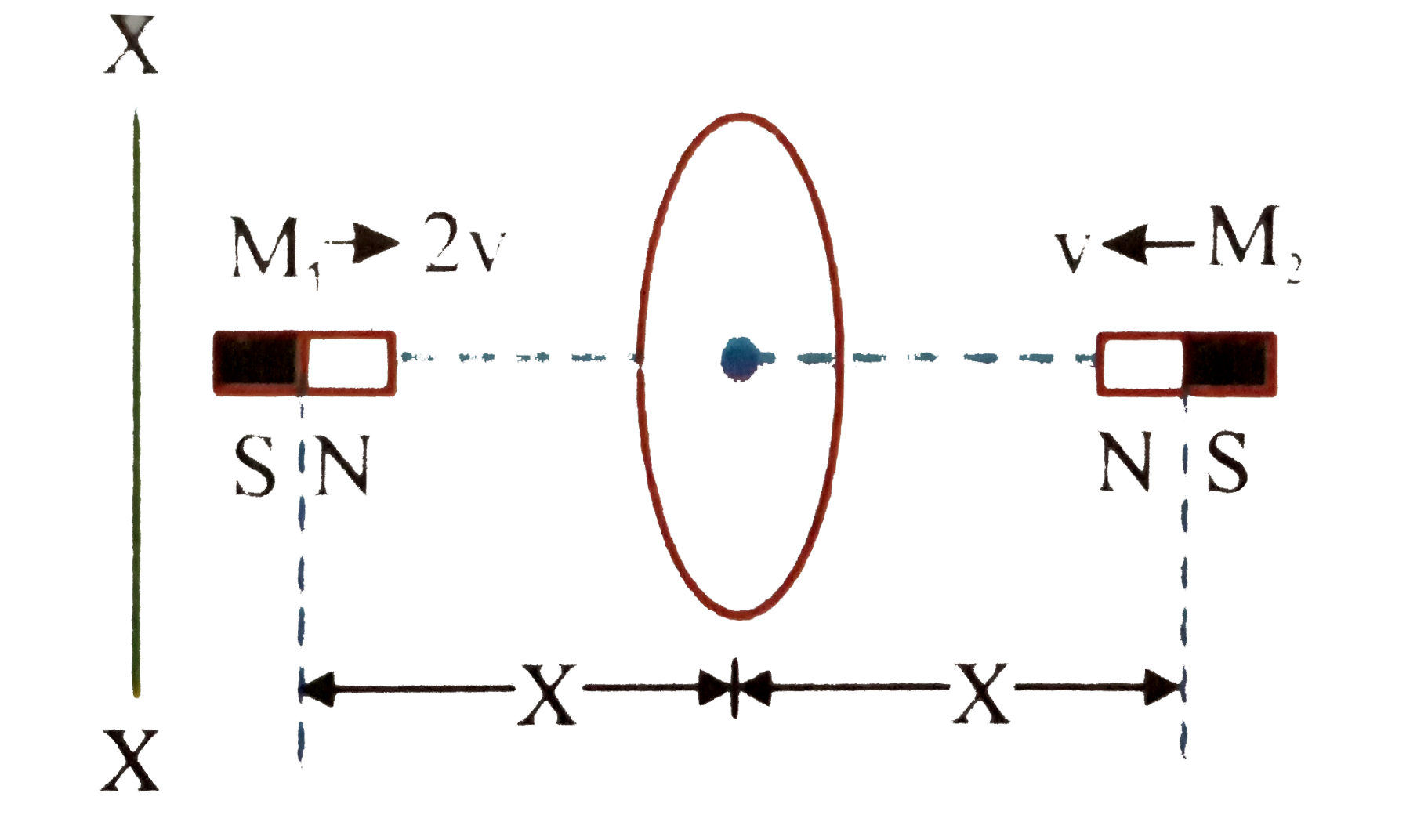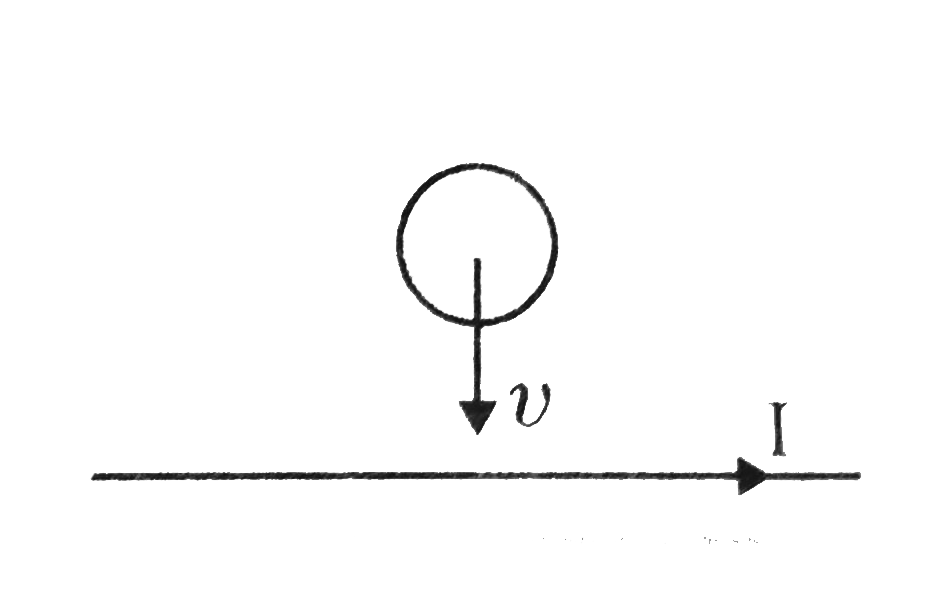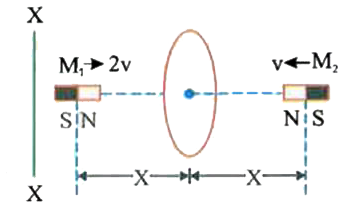The North pole of a magnet is falling on a metallic ring as shown in the figure. The direction of induced current, if looked from upside in the ring will be

clockwise or anti-clockwise depending on metal of the ring
no induced current
Anti-clockwise current
clockwiser
The correct Answer is:C

By Lenz's law the direction of induced current in the ring is such as to oppose the falling of N-pole of the magnet. So, the direction of induced current will be anti-clockwise, because the induced current makes the ring a magnetic dipole. with its N-pole upward which opposes (repel) the N-pole of falling magnet. Hence, the direction of the current in the ring will be anti-clockwise.
Topper's Solved these Questions
- ELECTROMAGNETIC INDUCTIONBOOK - MHTCET PREVIOUS YEAR PAPERS AND PRACTICE PAPERSCHAPTER - ELECTROMAGNETIC INDUCTIONEXERCISE - Example 2
28 Videos
- ELECTROMAGNETIC INDUCTIONBOOK - MHTCET PREVIOUS YEAR PAPERS AND PRACTICE PAPERSCHAPTER - ELECTROMAGNETIC INDUCTIONEXERCISE - Example 30
1 Videos
- ELECTROMAGNETIC INDUCTIONBOOK - MHTCET PREVIOUS YEAR PAPERS AND PRACTICE PAPERSCHAPTER - ELECTROMAGNETIC INDUCTIONEXERCISE - MHT CET CONER
34 Videos
- ELASTICITY BOOK - MHTCET PREVIOUS YEAR PAPERS AND PRACTICE PAPERSCHAPTER - ELASTICITY EXERCISE - MHT CET CORNER
16 Videos
- ELECTRONS AND PROTONSBOOK - MHTCET PREVIOUS YEAR PAPERS AND PRACTICE PAPERSCHAPTER - ELECTRONS AND PROTONSEXERCISE - MHT CET CORNER
19 Videos
Similar Questions
A current I from A to B is increasing in magnitudes as shown in figure. What is the direction of induced current in the loop.
View SolutionA metallic ring is attached horizontally with a wall. When a bar Magnet is passed through the ring from the top of the ring as shown in the figure. The induced current in the ring will be (as observed from above) IN S
View Solution
Knowledge Check
The current flows from A to B as shown in the figure The direction of the induced current in the loop is :
 AclockwiseBanticlockwiseCstraight lineDnone of these
AclockwiseBanticlockwiseCstraight lineDnone of theseAs shown in the figure, the key K is closed, the direction of the induced current in the coil B will be -
 Aclockwise and instantaneousBanti-clockwise and instantaneousCclockwise and continuousDanti-clockwise and continuous
Aclockwise and instantaneousBanti-clockwise and instantaneousCclockwise and continuousDanti-clockwise and continuousA closed conducting ring is placed in between two bar magnets as shown in the figure. The pole strenght of M1 is double that of M2. When the two bar magnets are at same distance from the centre of the ring, the bar magnet M1 has given a velocity 2v while M2 is given velocity v in the direction as shown in the figure.

The direction of induced current in the ring as seen from XX from this moment to the moment till bar magnets collide isAAlways clockwiseBalways anticlockwiseCfirst anti-clockwise, and then anticlockwiseDfirst anti-clockwise, and then clockwise
A metal ring moves towards a straingt wire carrying current. What is the direction of induced current in the ring ?

View SolutionWhen the north pole of a magnet is moved away from a coil, what is the direction of current induced in a coil?
View SolutionThe south pole of a magnet is brought near a conducting loop. What is the direction of induced current as seen by a person on the other side of the loop ?

View SolutionA closed conducting ring is placed in between two bar magnets as shown in the figure. The pole strength of M1 is double that of M2 . When the two bar magnets are at same distance from the centre of the ring, the bar magnet M1 has given a velocity 2v while M2 is given velocity v in the direction as shown in the figure.

The direction of induced current in the ring as seen from XX from this moment to the moment till bar magnets collide is
View SolutionThe north pole of earth magnet is in the :
View Solution
